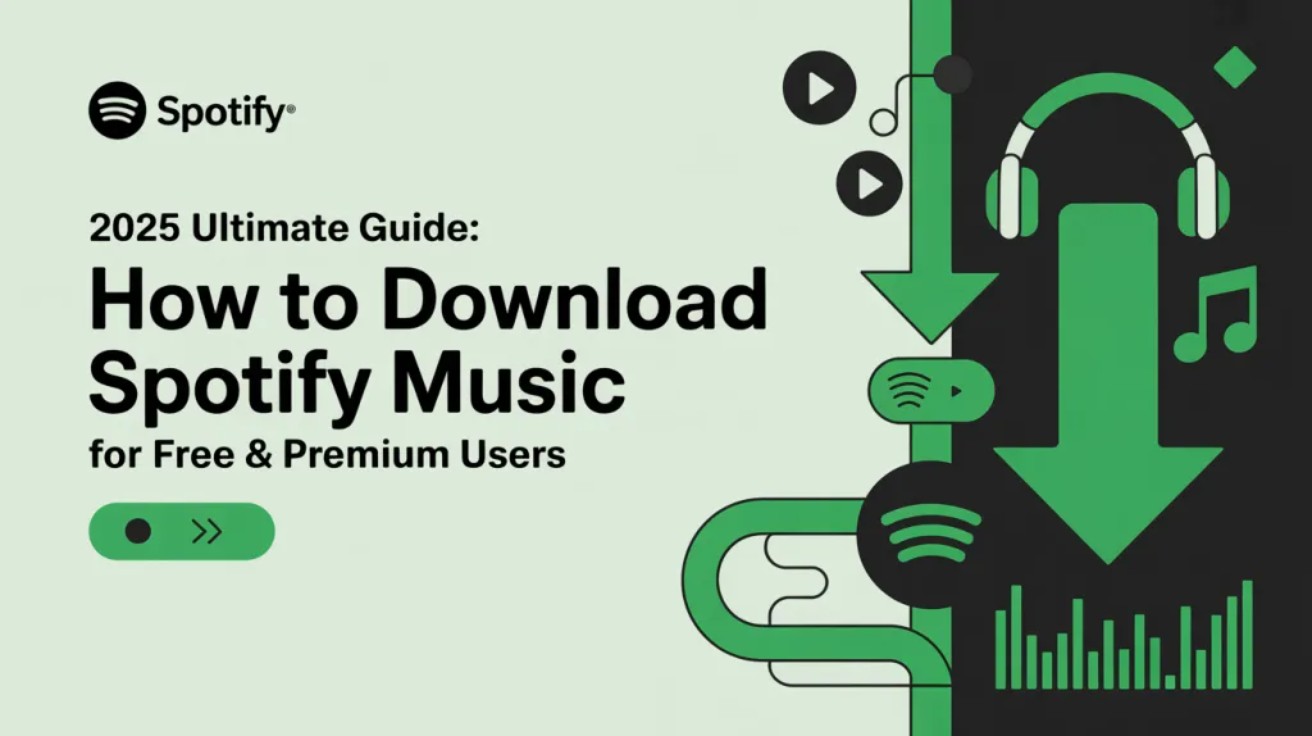Spotify Audio Quality in 2025: Best Settings & Tips
Summary: Spotify’s highest quality is now lossless, up to 24‑bit/44.1 kHz FLAC for Premium users. You turn it on per device via Profile → Settings & Privacy → Media Quality, with separate toggles for Wi‑Fi, Cellular, and Downloads. You’ll see a Lossless indicator in Now Playing when it’s active.
Spotify has started rolling out Lossless to Premium listeners in 50+ markets, delivering “up to 24‑bit/44.1 kHz FLAC” across nearly the entire music catalog. You’ll get an in‑app notification when your account is enabled; support for more devices (including Sonos and Amazon) is slated for October 2025.
1. Spotify Audio Quality at a Glance (Free vs Premium)
Below are the music quality details of different platforms for free and premium accounts. You can see that the web player is capped. Premium tops out at AAC 256 kbps (Free at AAC 128 kbps), so use the desktop/mobile apps or Spotify Connect for Lossless.
| Spotify Audio Quality Tiers (Updated September 2025) | ||||||||||||||||||||||||||||||||||||||||||||||||||||||||||||||||||||||||||||||||||||||||||||||||||||
|---|---|---|---|---|---|---|---|---|---|---|---|---|---|---|---|---|---|---|---|---|---|---|---|---|---|---|---|---|---|---|---|---|---|---|---|---|---|---|---|---|---|---|---|---|---|---|---|---|---|---|---|---|---|---|---|---|---|---|---|---|---|---|---|---|---|---|---|---|---|---|---|---|---|---|---|---|---|---|---|---|---|---|---|---|---|---|---|---|---|---|---|---|---|---|---|---|---|---|---|---|
| Account | Platform | Max Quality | Nominal Bitrate / Resolution | Applies to | Key notes | |||||||||||||||||||||||||||||||||||||||||||||||||||||||||||||||||||||||||||||||||||||||||||||||
| Free | Web Player | AAC (lossy) | Up to ~128 kbps |
Music, Podcasts, Audiobooks |
Web Player caps at AAC; Lossless unavailable on Web. | |||||||||||||||||||||||||||||||||||||||||||||||||||||||||||||||||||||||||||||||||||||||||||||||
| Premium | Web Player | AAC (lossy) | Up to ~256 kbps |
Music, Podcasts, Audiobooks |
Best on Web is AAC 256; use apps/Connect for Lossless. | |||||||||||||||||||||||||||||||||||||||||||||||||||||||||||||||||||||||||||||||||||||||||||||||
| Premium | Mobile/Desktop apps | Very High (lossy) | ~320 kbps |
Music, Podcasts, Audiobooks |
Legacy top tier before Lossless. | |||||||||||||||||||||||||||||||||||||||||||||||||||||||||||||||||||||||||||||||||||||||||||||||
| Premium | Mobile/Desktop apps | Lossless (FLAC) | Up to 24‑bit / 44.1 kHz | Music only | Per-device setting. Indicator shows in Now Playing. | |||||||||||||||||||||||||||||||||||||||||||||||||||||||||||||||||||||||||||||||||||||||||||||||
| Premium | Spotify Connect (compatible devices) | Lossless (FLAC) | Up to 24‑bit (see device spec) | Music only | Wireless Lossless via Connect on supported devices. | |||||||||||||||||||||||||||||||||||||||||||||||||||||||||||||||||||||||||||||||||||||||||||||||
2. How to Enable the Highest Quality on Spotify (iOS, Android, Desktop, Web)
Firstly, look for the Lossless badge in Now Playing or the Connect Picker to confirm that you have enabled Lossless on each device you use. This is the premise.
Do note: Lossless is not available for Music Videos, Podcasts, or Audiobooks.
2.1 Spotify Lossless Settings
iOS & Android (mobile/tablet)
Make sure your Spotify mobile app is running on 9.0.58 and above.
- Open Spotify → tap your profile (top‑left).
- Settings & Privacy → Media Quality.
- Under Wi‑Fi, Cellular, and Downloads, choose Lossless.
- Play a track; confirm the Lossless indicator appears.
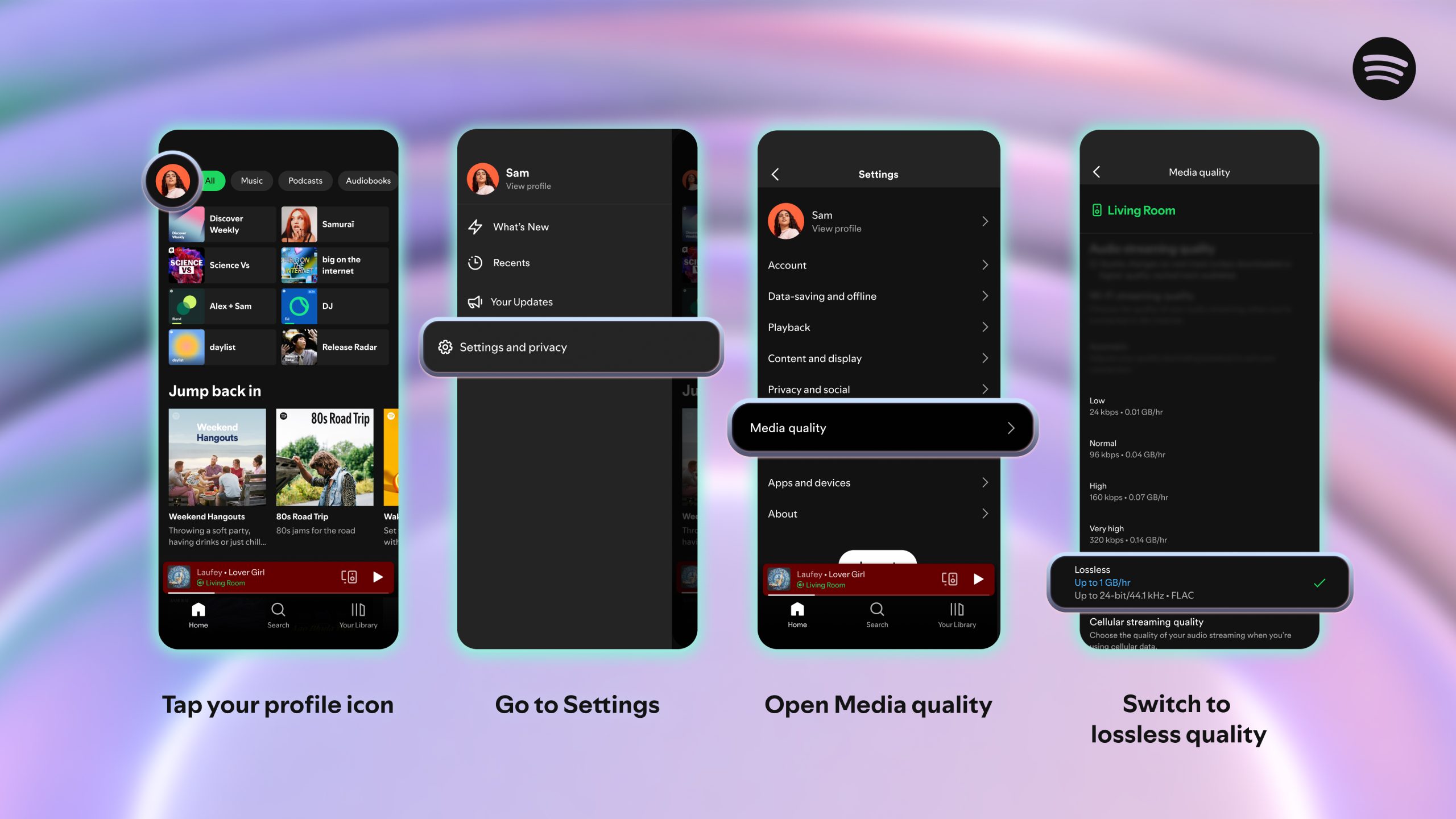
Desktop app (Windows/macOS)
Make sure your Spotify desktop app is running on 1.2.67 and above.
- Open the desktop app → click your profile.
- Settings & Privacy → Media Quality → set Lossless for Streaming and Downloads.
- Use wired output (USB DAC/headphones) or Connect to a compatible speaker for true lossless.
Web Player (Browser)
- The Web Player’s current maximum is AAC 256 kbps on Premium (AAC 128 kbps on Free). For Lossless on a computer, switch to the desktop app or use Spotify Connect to a compatible device.
Spotify Connect (wireless to speakers/AV gear)
- On compatible devices, Connect can deliver up to 24‑bit Lossless. For Connect devices, adjust quality using the Device settings while connected.
Spotify recommends 1.5–2 Mbps for a smooth Lossless experience. That’s roughly ~0.68–0.90 GB per hour of continuous streaming (1.5–2 megabits/s ÷ 8 × 3600). Downloading Lossless tracks avoids repeated network use and is better for battery on the go.
2.2 Lossless vs 320 kbps: what changes and what doesn’t
Moving from 320 kbps (Very High) to 24‑bit/44.1 kHz FLAC reduces psychoacoustic compression artifacts and can improve micro‑detail, decay, and stereo image when the mastering and your playback chain can reveal it.
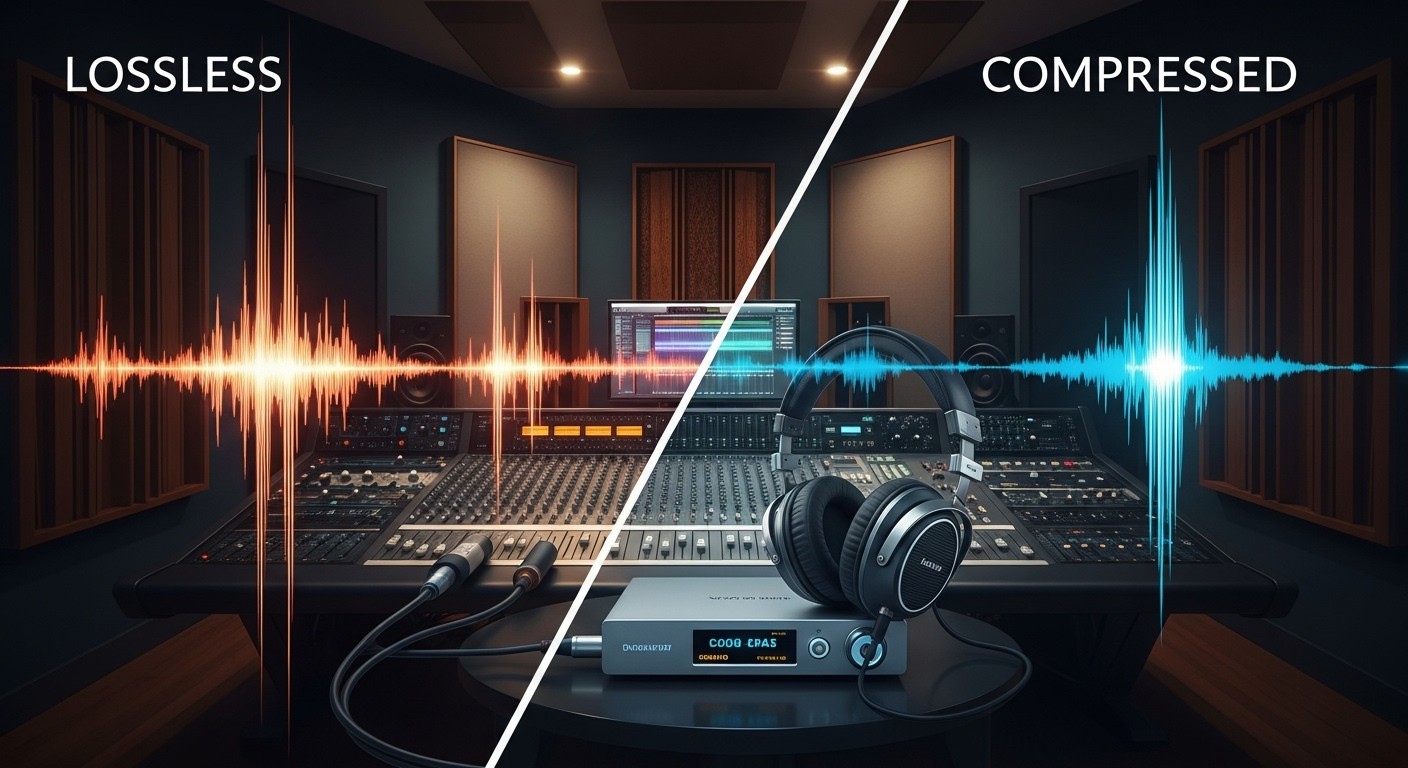
Two big caveats:
- Bluetooth isn’t lossless today. Most Bluetooth codecs recompress the stream, so you won’t get end‑to‑end Lossless. Use wired or Connect for true Lossless.
- Normalization affects perceived loudness. Spotify targets ‑14 LUFS (Premium can choose Loud −11 / Normal −14 / Quiet −19). Normalization applies even with Lossless and can change your perception of “punch” at matched volumes.
Related reading: Spotify & Apple Music Sound Quality
2.3 What factors impact the lossless quality?
If you don’t hear a night‑and‑day difference, that’s normal. These factors may affect the listening experience. content, mastering, DAC/headphones, and room matter as much as format.
- Source: Even with Lossless enabled, what you hear is limited first by the source. If the original recording or mastering lacks detail, no file format can restore it.
- Devices: our phone, computer, DAC, and headphones/speakers all need to be Lossless‑capable to pass the full signal without down‑sampling or re‑encoding.
- Connection: Bluetooth typically recompresses audio and won’t deliver true end‑to‑end Lossless.
In short, start with a well‑mastered track, verify that your devices can handle Lossless, and choose a connection that preserves the full resolution.
2.3 Troubleshooting about Spotify Lossless Quality
I turned on Lossless but don’t hear a difference.
- Check the signal path:Are you still on Bluetooth? Use wired or Connect.target="_blank">
- Confirm app versions: Mobile 9.0.58+, Desktop 1.2.67+ recommended for Lossless.
- Verify the content: Lossless depends on the original recording/master. Not all tracks benefit equally.
- Normalization: Try Normal/Quiet or disable per your preference; normalization runs even with Lossless.
- Network: If buffering, fall back to Very High or download first; aim for 1.5–2 Mbps steady.
- Web Player: Remember it’s AAC 256 max—Lossless requires the app or Connect. (Inference from official docs.)
3. Best Spotify Music Quality Settings
Don't know how to choose the best audio quality in different scenarios? Check the table below.
|
Home WIFI + Wired/Connect |
Streaming: Lossless | Downloads: Lossless |
|
Mobile on data |
Streaming: High/Very High | Downloads: Lossless |
|
Strict data plan |
Streaming: Normal/High | Downloads: Selective Lossless |
|
Laptop browser |
Streaming: Web tops at AAC 256 | Downloads: switch to desktop app or Connect for Lossless |
4. Spotify vs Apple Music / TIDAL / Amazon Music
You may wonder about the difference between these streaming platforms; here is a quick snapshot of music quality details:
| Streaming Platforms | Audio Quality | Dolby Atmos |
|---|---|---|
| Spotify Premium | up to 24‑bit/44.1 kHz FLAC | no native Dolby Atmos/Spatial mixes announced with this rollout |
| Apple Music | Lossless (16/44.1) to Hi‑Res Lossless (24/192) | extensive Dolby Atmos catalog |
| TIDAL | FLAC up to 24/192 (HiRes FLAC) | Dolby Atmos on supported devices |
| Amazon Music Unlimited | HD (16/44.1) and Ultra HD (up to 24/192) | spatial on select gear |
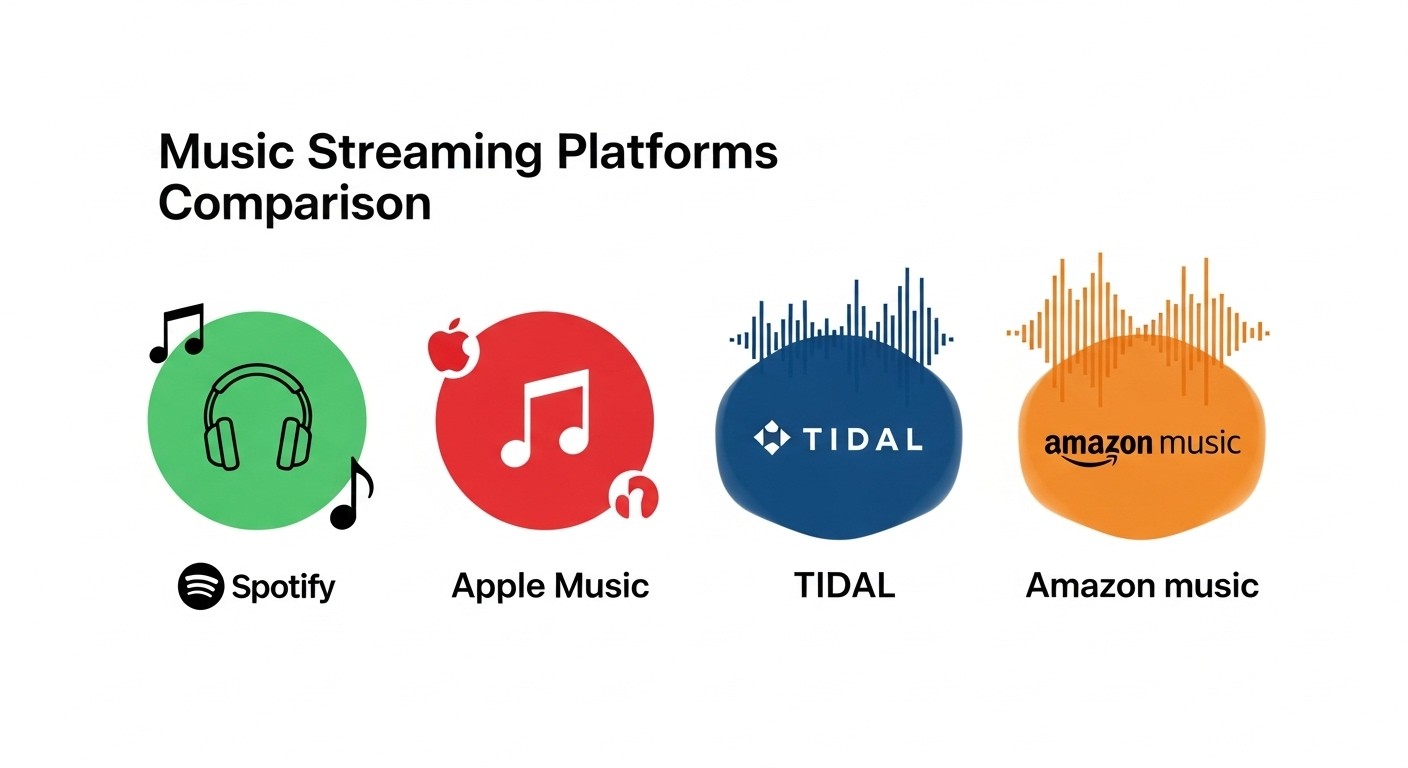
Bottom line: For most listeners, the jump from lossy 320 kbps to Lossless is the big win; hi‑res beyond 44.1 kHz is situational and gear‑dependent.
5. Bonus: Listen to Spotify Offline without Limits Using MusicFab
If you are a music hoarder, enjoy managing large offline libraries across devices, or simply want to listen to music without an internet connection while traveling. MusicFab meets your need. It supports you to download Spotify music in various audio qualities, from 128 kbps to 320 kbps, with MP3, FLAC, OPUS, WAV, and M4A format support.
Key features of MusicFab Spotify Converter included:
- Built-in web browser to search and download music.
- Free and premium accounts are available.
- Save metadata such as ID3 tags and lyrics.
- 3-song free trial.
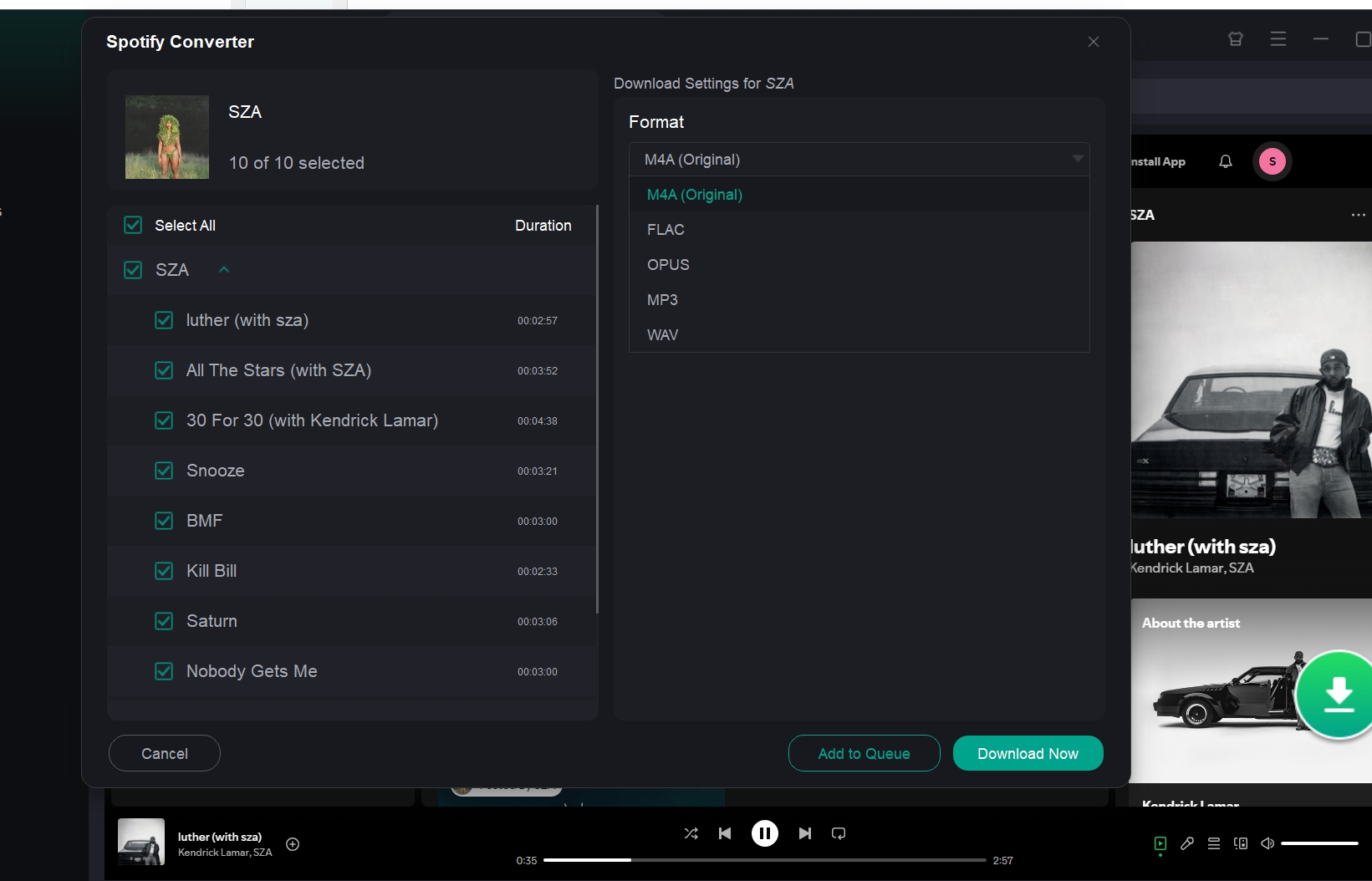
For a detailed MusicFab review and step-by-step guide, kindly see this post.
6. FAQs
Yes. Spotify Premium now includes Lossless (up to 24‑bit/44.1 kHz FLAC) in supported markets.
Lossless. On the Web Player, Premium is capped at AAC 256 kbps (Free at AAC 128 kbps).
Yes, set Downloads = Lossless in Settings & Privacy → Media Quality (per device).
Spotify’s Lossless announcement focuses on stereo FLAC; native Atmos/Spatial mixes aren’t part of this rollout. Competitors (Apple/TIDAL/Amazon) offer spatial catalogs.
Mastering quality, your DAC/headphones/speakers, room acoustics, and loudness normalization all affect perceived detail. Try wired playback and adjust normalization.




